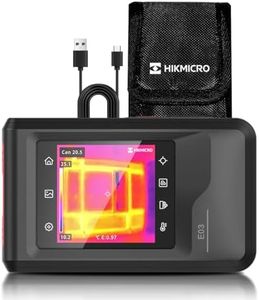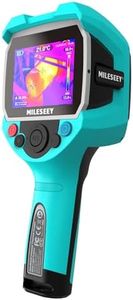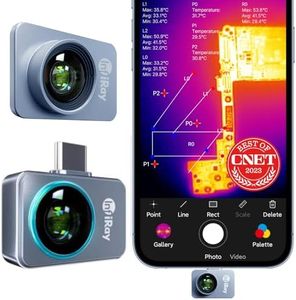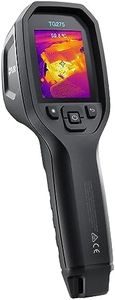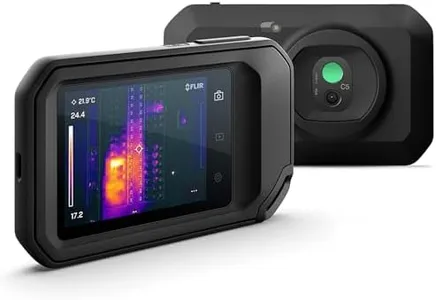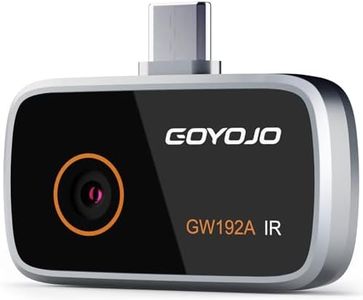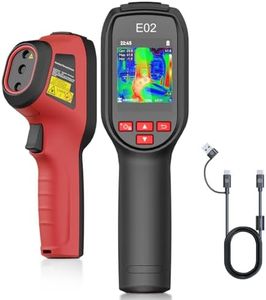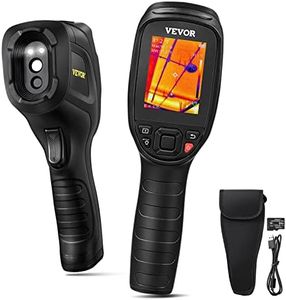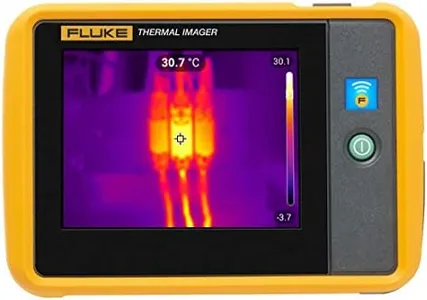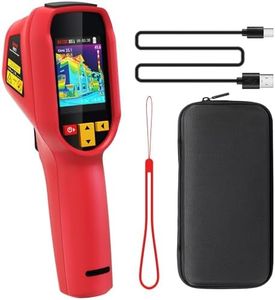We Use CookiesWe use cookies to enhance the security, performance,
functionality and for analytical and promotional activities. By continuing to browse this site you
are agreeing to our privacy policy
10 Best Thermal Infrared Cameras
From leading brands and best sellers available on the web.By clicking on a link to a third party's website, log data is shared with that third party.
Buying Guide for the Best Thermal Infrared Cameras
Choosing a thermal infrared camera can feel a bit overwhelming because there are several important features to consider, each affecting what you can see, how well you can see it, and in what conditions the camera will work best. Understanding your primary use, such as building inspections, electrical maintenance, security, hunting, or scientific research, will help you focus on the most useful specifications. Carefully matching the camera's abilities to your intended usage ensures you’re getting a device that will work well for your needs, rather than over- or under-buying.ResolutionResolution in a thermal camera refers to the number of pixels in the thermal image, shown as width x height (for example, 320x240). This is important because higher resolution creates a sharper, clearer image, helping you identify smaller or more distant objects. Thermal camera resolutions range from basic (like 80x60) to high-end devices (such as 640x480 and above). For simple tasks like checking for heat leaks around doors or casual home use, a lower resolution may suffice. If you need detail for professional building inspections or electrical work, choosing a higher resolution is usually worth it.
Thermal Sensitivity (NETD)Thermal Sensitivity, sometimes shown as NETD (Noise Equivalent Temperature Difference), measures the smallest temperature difference the camera can distinguish. This matters when you need to spot slight temperature changes or fine details. Sensitivity values are given in millikelvin (mK), where a lower number means better sensitivity. Typical cameras range from 30mK (very sensitive) to 100mK (less sensitive). If you work with subtle temperature differences, like detecting moisture under surfaces or precise laboratory work, prioritize lower NETD values. For general outdoor or equipment scanning, average sensitivity is usually enough.
Temperature RangeThe temperature range tells you the hottest and coldest temperatures the camera can accurately measure. This is key if you’ll be using it in very hot or cold places, or checking objects at extreme temperatures like industrial furnaces or freezers. Ranges may start as low as -20°C and go up to 650°C or even higher. If you’re just checking indoor heat loss or typical outdoor tasks, a moderate range covers most situations. For specialized industrial or scientific use, make sure the camera’s range fits your expected temperatures.
Field of View (FOV)Field of View refers to how wide an area the camera can capture in one image, often given in degrees. A wide field of view lets you see more at once, useful for scanning large spaces, while a narrow field of view focuses on more detail at a distance. Very wide fields might be around 60° and narrow ones closer to 12°. If you need to scan corridors, large facilities, or crowds, a wider field can be helpful. If you’ll work with smaller targets at a distance, like electrical wires up high or far-off animals, a narrower field is better.
FocusFocus refers to whether the camera uses a fixed lens or allows you to adjust sharpness for different distances. Manual focus lets you sharply view targets far away or close up, while fixed focus is easier to use but less versatile. If you want fast, simple operation and don’t care about close detail, fixed focus can be fine. If you expect to examine objects at many distances or need crisp images for reporting, prefer a camera with adjustable focus.
Image and Video StorageThis tells you how the camera saves still images or video, whether that's built-in memory, removable card, or direct-to-computer connection. It's important because you may want to review or share images later. Some cameras offer instant Wi-Fi transfer; others rely on SD cards or USB. If you expect to take lots of images or need to keep detailed records, look for higher storage capacity or easy transfer options. Occasional users or those okay with deleting old files don’t need as much.
Durability and Environmental ProtectionThis is about how well the camera can survive drops, dust, moisture, and temperature extremes. Ratings like IP (Ingress Protection) tell you how much dust and water a device can handle. If you’ll be working outdoors or in rough industrial areas, look for higher protection ratings and rugged construction. For controlled indoor use, less rugged models are fine.
